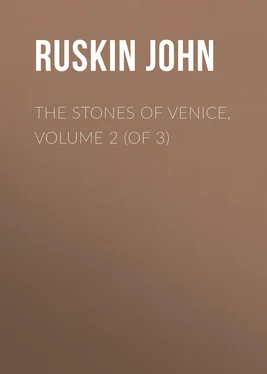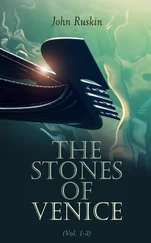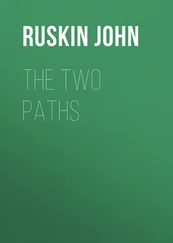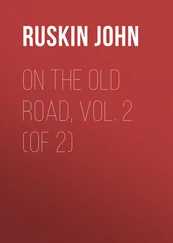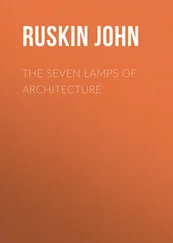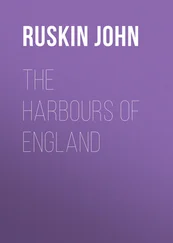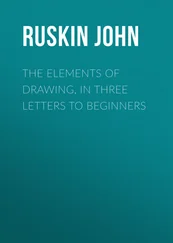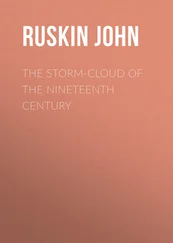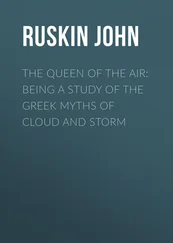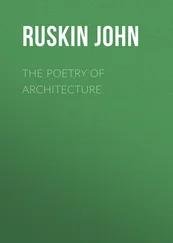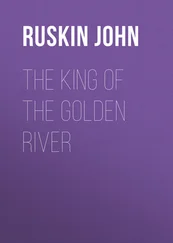John Ruskin - The Stones of Venice, Volume 2 (of 3)
Здесь есть возможность читать онлайн «John Ruskin - The Stones of Venice, Volume 2 (of 3)» — ознакомительный отрывок электронной книги совершенно бесплатно, а после прочтения отрывка купить полную версию. В некоторых случаях можно слушать аудио, скачать через торрент в формате fb2 и присутствует краткое содержание. Жанр: foreign_antique, foreign_home, architecture_book, literature_19, visual_arts, на английском языке. Описание произведения, (предисловие) а так же отзывы посетителей доступны на портале библиотеки ЛибКат.
- Название:The Stones of Venice, Volume 2 (of 3)
- Автор:
- Жанр:
- Год:неизвестен
- ISBN:нет данных
- Рейтинг книги:5 / 5. Голосов: 1
-
Избранное:Добавить в избранное
- Отзывы:
-
Ваша оценка:
- 100
- 1
- 2
- 3
- 4
- 5
The Stones of Venice, Volume 2 (of 3): краткое содержание, описание и аннотация
Предлагаем к чтению аннотацию, описание, краткое содержание или предисловие (зависит от того, что написал сам автор книги «The Stones of Venice, Volume 2 (of 3)»). Если вы не нашли необходимую информацию о книге — напишите в комментариях, мы постараемся отыскать её.
The Stones of Venice, Volume 2 (of 3) — читать онлайн ознакомительный отрывок
Ниже представлен текст книги, разбитый по страницам. Система сохранения места последней прочитанной страницы, позволяет с удобством читать онлайн бесплатно книгу «The Stones of Venice, Volume 2 (of 3)», без необходимости каждый раз заново искать на чём Вы остановились. Поставьте закладку, и сможете в любой момент перейти на страницу, на которой закончили чтение.
Интервал:
Закладка:
§ XXXVII. Law VI. The decoration must be shallow in cutting. The method of construction being thus systematized, it is evident that a certain style of decoration must arise out of it, based on the primal condition that over the greater part of the edifice there can be no deep cutting . The thin sheets of covering stones do not admit of it; we must not cut them through to the bricks; and whatever ornaments we engrave upon them cannot, therefore, be more than an inch deep at the utmost. Consider for an instant the enormous differences which this single condition compels between the sculptural decoration of the incrusted style, and that of the solid stones of the North, which may be hacked and hewn into whatever cavernous hollows and black recesses we choose; struck into grim darknesses and grotesque projections, and rugged ploughings up of sinuous furrows, in which any form or thought may be wrought out on any scale,—mighty statues with robes of rock and crowned foreheads burning in the sun, or venomous goblins and stealthy dragons shrunk into lurking-places of untraceable shade: think of this, and of the play and freedom given to the sculptor’s hand and temper, to smite out and in, hither and thither, as he will; and then consider what must be the different spirit of the design which is to be wrought on the smooth surface of a film of marble, where every line and shadow must be drawn with the most tender pencilling and cautious reserve of resource,—where even the chisel must not strike hard, lest it break through the delicate stone, nor the mind be permitted in any impetuosity of conception inconsistent with the fine discipline of the hand. Consider that whatever animal or human form is to be suggested, must be projected on a flat surface; that all the features of the countenance, the folds of the drapery, the involutions of the limbs, must be so reduced and subdued that the whole work becomes rather a piece of fine drawing than of sculpture; and then follow out, until you begin to perceive their endlessness, the resulting differences of character which will be necessitated in every part of the ornamental designs of these incrusted churches, as compared with that of the Northern schools. I shall endeavor to trace a few of them only.
§ XXXVIII. The first would of course be a diminution of the builder’s dependence upon human form as a source of ornament: since exactly in proportion to the dignity of the form itself is the loss which it must sustain in being reduced to a shallow and linear bas-relief, as well as the difficulty of expressing it at all under such conditions. Wherever sculpture can be solid, the nobler characters of the human form at once lead the artist to aim at its representation, rather than at that of inferior organisms; but when all is to be reduced to outline, the forms of flowers and lower animals are always more intelligible, and are felt to approach much more to a satisfactory rendering of the objects intended, than the outlines of the human body. This inducement to seek for resources of ornament in the lower fields of creation was powerless in the minds of the great Pagan nations, Ninevite, Greek, or Egyptian: first, because their thoughts were so concentrated on their own capacities and fates, that they preferred the rudest suggestion of human form to the best of an inferior organism; secondly, because their constant practice in solid sculpture, often colossal, enabled them to bring a vast amount of science into the treatment of the lines, whether of the low relief, the monochrome vase, or shallow hieroglyphic.
§ XXXIX. But when various ideas adverse to the representation of animal, and especially of human, form, originating with the Arabs and iconoclast Greeks, had begun at any rate to direct the builders’ minds to seek for decorative materials in inferior types, and when diminished practice in solid sculpture had rendered it more difficult to find artists capable of satisfactorily reducing the high organisms to their elementary outlines, the choice of subject for surface sculpture would be more and more uninterruptedly directed to floral organisms, and human and animal form would become diminished in size, frequency, and general importance. So that, while in the Northern solid architecture we constantly find the effect of its noblest features dependent on ranges of statues, often colossal, and full of abstract interest, independent of their architectural service, in the Southern incrusted style we must expect to find the human form for the most part subordinate and diminutive, and involved among designs of foliage and flowers, in the manner of which endless examples had been furnished by the fantastic ornamentation of the Romans, from which the incrusted style had been directly derived.
§ XL. Farther. In proportion to the degree in which his subject must be reduced to abstract outline will be the tendency in the sculptor to abandon naturalism of representation, and subordinate every form to architectural service. Where the flower or animal can be hewn into bold relief, there will always be a temptation to render the representation of it more complete than is necessary, or even to introduce details and intricacies inconsistent with simplicity of distant effect. Very often a worse fault than this is committed; and in the endeavor to give vitality to the stone, the original ornamental purpose of the design is sacrificed or forgotten. But when nothing of this kind can be attempted, and a slight outline is all that the sculptor can command, we may anticipate that this outline will be composed with exquisite grace; and that the richness of its ornamental arrangement will atone for the feebleness of its power of portraiture. On the porch of a Northern cathedral we may seek for the images of the flowers that grow in the neighboring fields, and as we watch with wonder the grey stones that fret themselves into thorns, and soften into blossoms, we may care little that these knots of ornament, as we retire from them to contemplate the whole building, appear unconsidered or confused. On the incrusted building we must expect no such deception of the eye or thoughts. It may sometimes be difficult to determine, from the involutions of its linear sculpture, what were the natural forms which originally suggested them: but we may confidently expect that the grace of their arrangement will always be complete; that there will not be a line in them which could be taken away without injury, nor one wanting which could be added with advantage.
§ XLI. Farther. While the sculptures of the incrusted school will thus be generally distinguished by care and purity rather than force, and will be, for the most part, utterly wanting in depth of shadow, there will be one means of obtaining darkness peculiarly simple and obvious, and often in the sculptor’s power. Wherever he can, without danger, leave a hollow behind his covering slabs, or use them, like glass, to fill an aperture in the wall, he can, by piercing them with holes, obtain points or spaces of intense blackness to contrast with the light tracing of the rest of his design. And we may expect to find this artifice used the more extensively, because, while it will be an effective means of ornamentation on the exterior of the building, it will be also the safest way of admitting light to the interior, still totally excluding both rain and wind. And it will naturally follow that the architect, thus familiarized with the effect of black and sudden points of shadow, will often seek to carry the same principle into other portions of his ornamentation, and by deep drill-holes, or perhaps inlaid portions of black color, to refresh the eye where it may be wearied by the lightness of the general handling.
§ XLII. Farther. Exactly in proportion to the degree in which the force of sculpture is subdued, will be the importance attached to color as a means of effect or constituent of beauty. I have above stated that the incrusted style was the only one in which perfect or permanent color decoration was possible . It is also the only one in which a true system of color decoration was ever likely to be invented. In order to understand this, the reader must permit me to review with some care the nature of the principles of coloring adopted by the Northern and Southern nations.
Читать дальшеИнтервал:
Закладка:
Похожие книги на «The Stones of Venice, Volume 2 (of 3)»
Представляем Вашему вниманию похожие книги на «The Stones of Venice, Volume 2 (of 3)» списком для выбора. Мы отобрали схожую по названию и смыслу литературу в надежде предоставить читателям больше вариантов отыскать новые, интересные, ещё непрочитанные произведения.
Обсуждение, отзывы о книге «The Stones of Venice, Volume 2 (of 3)» и просто собственные мнения читателей. Оставьте ваши комментарии, напишите, что Вы думаете о произведении, его смысле или главных героях. Укажите что конкретно понравилось, а что нет, и почему Вы так считаете.
